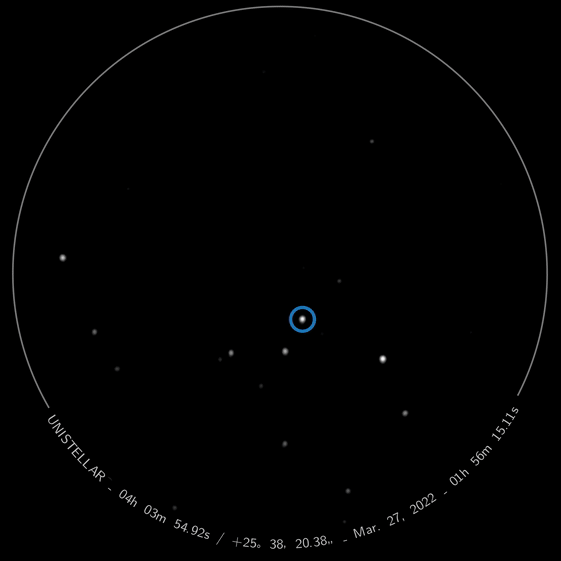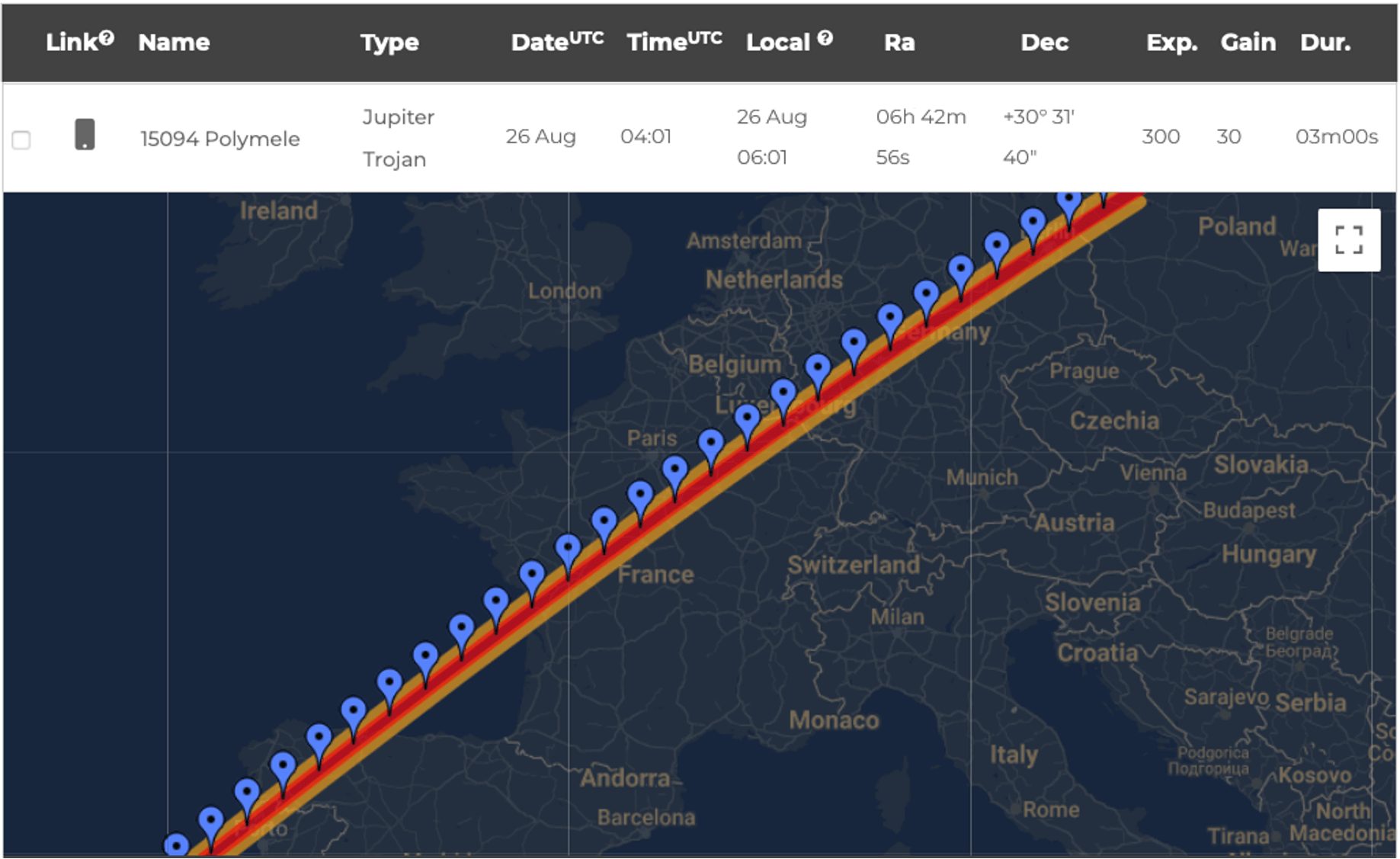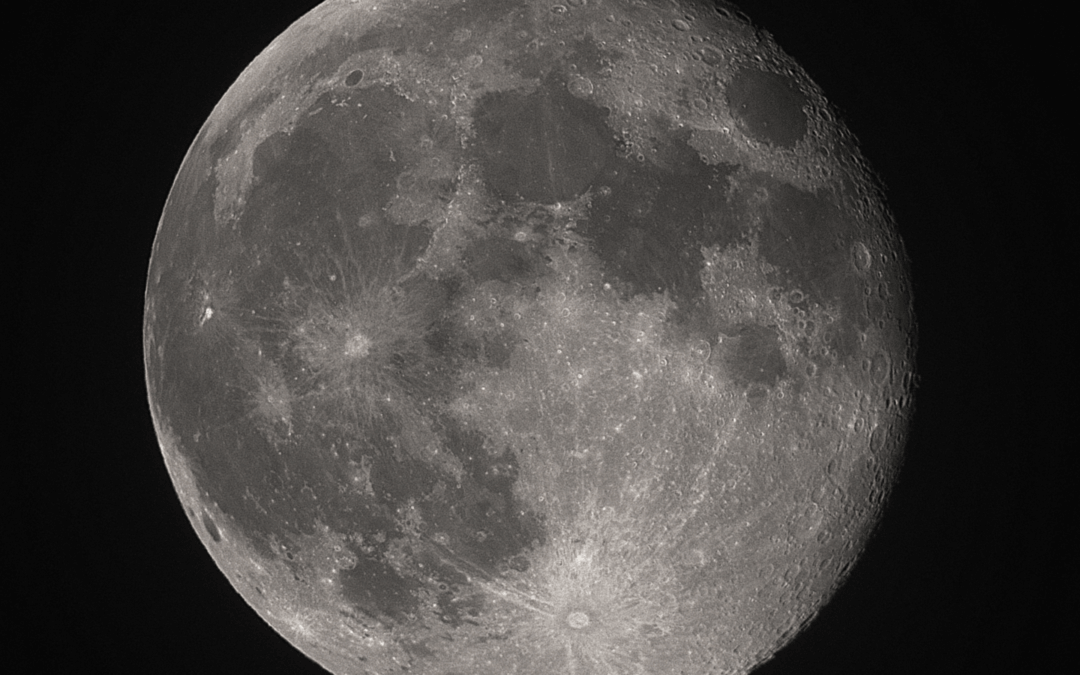Sometimes all it takes to make a new discovery is a little bit of luck. That was the case for a recent observing campaign of the Trojan asteroid 15094 Polymele, which discovered a new moon around the 21-km-wide asteroid. And guess what? There is another opportunity on August 26.
It was a pleasant surprise for the observation team, which included contributions from Unistellar Citizen Astronomers, and could even give NASA scientists a bonus asteroid visit in a few years. 15094 Polymele is a target for the asteroid-hunting Lucy mission, which in 2027 is set to visit the Trojan asteroids that follow Jupiter’s path around the Sun.
On 2022, March 27, more than a dozen observers in the United States, including Unistellar Network members and father-son duo Paul and Anthony Dalba, trained their eyes on the sky to catch a quick glimpse of Polymele as it passed in front of a distant star, an event called an occultation. Paul and Anthony both made successful citizen astronomy observations with their eVscopes, giving scientists with the Lucy mission important information about Polymele’s shape and orbit.

Meanwhile, another pair of skygazers slightly south of the occultation path made their own exciting observation. Though they missed seeing Polymele itself, the observers saw a completely different asteroid orbit in front of the star right as Polymele was passing by. It turned out to be the first-ever observation of a brand new companion asteroid orbiting alongside Polymele. That makes Polymele a binary asteroid, or two asteroids bound to each other by gravity.
The new object is about 5 km in diameter, and, according to Spaceflight.com, bears the temporary name “Shaun,” after the friendly sheep companion in the stop-motion animated “Wallace and Gromit” series.

Credit: NASA
With the Lucy mission already set to visit Polymele, it’s likely that the spacecraft will be able to catch a glimpse of Shaun the companion asteroid as well. The Trojan asteroids are leftovers from the formation of solar system, and have remained relatively unchanged since then, making them time capsules from billions of years ago. With an extra time capsule to study, astronomers have a whole new chance to learn something new and exciting.
You don’t need to be a NASA astronomer to discover new moons and planets, or keep an eye on nearby asteroids. This month, there is an opportunity for Citizen Astronomers to observe another occultation of Polymele visible from Spain, France, Luxembourg, Germany and Poland!
Here’s how you can find Polymele on August 26:
First, if it’s your first time doing an occultation, check out our general tutorial on finding occultations with your eVscope. If you’re already a seasoned shadow hunter, you can go straight to our Asteroid Occultation Predictions page, click on Western Europe on the drop-down menu and scroll down the page until you find the 15094 Polymele event. The occultation will occur early in the morning for Europeans, at 6:01 a.m. CEST, so make sure to set your alarm for a chance to observe this binary asteroid!

The visibility map for the upcoming Polymele occultation. If you lie along this path, you may be able to catch the occultation! Check out the predictions page for an interactive, zoomable map.
Zoom into the map so you can see the exact locations where you can observe this occultation. Then check the information above the map to make sure you have the correct parameters (like the celestial coordinates and the telescope setting) and observe for the duration listed.
If you have any questions, please reach out to us at [email protected].
Further readings
3 Reasons to observe this month
Every month, discover three unmissable celestial events to observe with your Unistellar telescope.
Observing Eclipses on Jupiter: Cosmic Spectacles Through a Telescope
The latest Unistellar App Update, version V3.0, is now live. Explore a smooth stargazing experience !
Unistellar Community Included In Multiple Scientific Papers
Did you know Unistellar Citizen Astronomers are often cited in published scientific papers? Find out how you can contribute too!
What Are the Names of All the Full Moons in 2024?
Discover the enchanting names of the full moons in 2024. Delve into the unique character of each lunar spectacle and embrace the allure of the night sky.
New Unistellar App Update: Version 3.0
The latest Unistellar App Update, version V3.0, is now live. Explore a smooth stargazing experience !
What to Observe This November: Open Star Clusters and More
These Halloween deep-sky objects will add some light to those dark, spooky nights. Treats, tricks, and telescopes await!






